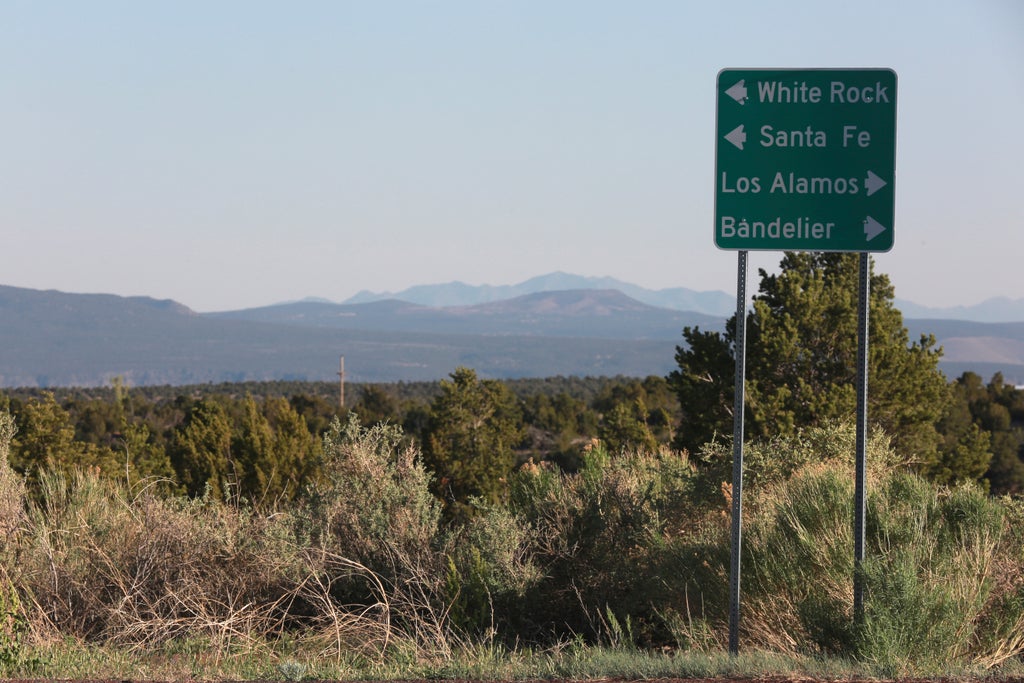
Public schools were closed and evacuation bags packed this week as a stubborn wildfire crept within a few miles of the city of Los Alamos and its companion U.S. national security lab — where assessing apocalyptic threats is a specialty and wildland fire is a beguiling equation.
People preparing to evacuate included a team of scientists at Los Alamos National Laboratory who are tapping supercomputers to peer into the future of wildfires in the American West, where climate change and an enduring drought are fanning the frequency and intensity of forest and grassland fire.
The research and partnerships eventually could yield reliable predictions that shape the way vast tracks of national forests are thinned — or selectively burned — to ward off disastrously hot conflagrations that can quickly overrun cities, sterilize soil and forever alter ecosystems.
“This actually is something that we’re really trying to leverage to look for ways to deal with fire in the future,” said Rod Linn, a senior lab scientist who leads efforts to create a supercomputing tool that predicts the outcome of fires in specific terrain and conditions.
The high stakes in the research are on prominent display during the furious start of spring wildfire season, which includes a blaze that has inched steadily toward Los Alamos National Laboratory, triggering preparations for a potential evacuation.
The lab is one of two U.S. sites gearing up to manufacture plutonium cores for use in nuclear weapons. Laboratory officials say critical infrastructure is well safeguarded from the fire, which spans 67 square miles (175 square kilometers).
Still, scientists are ready.
“We have our bags packed, cars loaded, kids are home from school — it’s kind of a crazy day,” said Adam Atchley, a father of two and laboratory hydrologist who studies wildfire ecology.
Wildfires that reach the Los Alamos National Laboratory increase the risk — however slightly — of disbursing chemical waste and radionuclides such as plutonium through the air or in the ashes carried away by runoff after a fire.
Mike McNaughton, an environmental health physicist at Los Alamos, acknowledges that chemical and radiological waste was blatantly mishandled in the early years of the laboratory, which emerged out of the World War II effort to design nuclear weapons under the Manhattan Project.
“People had a war to win and they were not careful,” McNaughton said. “Emissions now are very, very small compared with the historical emissions.”
Dave Fuehne, the laboratory’s team leader for air emissions measurement, says a network of about 25 air monitors encircle the facility. Additional high-volume monitors were deployed as fire broke out in April.
Trees and underbrush on the campus are removed manually — 3,500 tons (3,175 metric tons) over the course of the last four years, said Jim Jones, manager of the lab’s Wildland Fire Mitigation Project.
“We don’t do any burning,” Jones said. “It’s not worth the risk.”
Flames have also destroyed mansions on a California hilltop and chewed through more than 422 square miles (1,100 square kilometers) of tinder-dry mountainsides of northeastern New Mexico.
That fire in Sangre de Cristo Mountain range is the largest burning in the U.S., with thousands of residents still displaced as it continued its march Friday through thick ponderosa pine forests, destroying at least 170 homes in accessible areas that have been surveyed. In Colorado, authorities said Friday one person died in a fire that destroyed eight mobile homes in Colorado Springs.
Atchley says he’s contributing to research aimed at better understanding and preventing the most destructive wildfires, superheated blazes that leap through the upper crowns of mature pine trees. He says climate change is an unmistakable factor.
“It’s increasing the wildfire burn window. … The wildfire season is year-round,” Atchley said. “And this is happening not only in the United States, but in Australia and Indonesia and around the world.”
He’s not alone in suggesting that the answer may be more frequent fires of lower intensity that are set deliberately to mimic a cycle of burning and regeneration that may have take place every 2-6 years in New Mexico before the arrival of Europeans.
“What we’re trying to do at Los Alamos is figure out how do you implement prescribed fire safely ... given that it’s exceedingly hard with climate change,” he said.
Examples of intentional prescribed burns that escaped control include the 2000 Cerro Grande Fire that swept through residential areas of Los Alamos and across 12 square miles of the laboratory — more than one-quarter of the campus. The fire destroying more than 230 homes and 45 structures at the lab. In 2011, a larger and faster-moving fire burned fringes of the lab.
Atchley said the West's forests can be thought of and measured as one giant reserve that stores carbon and can help hold climate change in check — if extreme fires can be limited.
Land managers say expansive U.S. national forests can't be thinned by hand and machine alone.
Linn, the physicist, says wildfire modeling software is being shared with land managers at the U.S. Forest Service, as well as the Geological Service and Fish and Wildlife Service, for preliminary testing to see if can make prescribed fires easier to predict and control.
“We don’t advocate anybody using any of these models blindly,” he said. “Were in that essential phase of building those relationships with land managers and helping them to begin to make it their model as well.”







